Top 25 liveable cities / Global
Quality streets
A few subtle changes to the metrics, a handful of grand projects coming to fruition and a sprinkling of ambitious City Halls – this year’s Quality of Life Survey has seen some big changes. For the first time there are three Japanese cities in the top 10, with Tokyo – giddy at the prospect of the 2020 Olympics – rising to number two. Vancouver is our highest-ranked city in the Americas. Berlin is the highest riser, while Stockholm returns to the top five. Some big cities continue to miss the cut, for obvious reasons. Last year there were 414 murders in Chicago (for comparison, in Copenhagen there was one). London may have nightlife and culture but house prices are out of control and the police can’t always be trusted. Düsseldorf, San Francisco and Honolulu miss out this year, though that has more to do with the improvements made by others. Oslo and Lisbon return to the top 25, while Brisbane appears for the first time. Some things don’t change though and Copenhagen has won again. There’s no better person to introduce it than the woman who, as head of drama at Danish public broadcaster DR, has given the world two iconic dramas based in Denmark’s capital.
01
Copenhagen
These are two tales of one city. Borgen and The Killing, both of which I commissioned, may be set in Copenhagen but the cities on screen are very different.
In Borgen, you meet a friendly, welcoming city where people work, live and enjoy their lives. The characters walk and talk through the city day or night and it makes an elegant backdrop with its historical buildings – including the parliament, Borgen itself. The sun is shining and the wheels are spinning. It has an optimistic and friendly tone and it believes in the future.
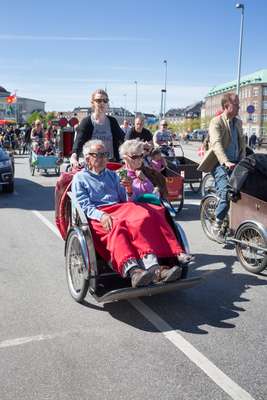
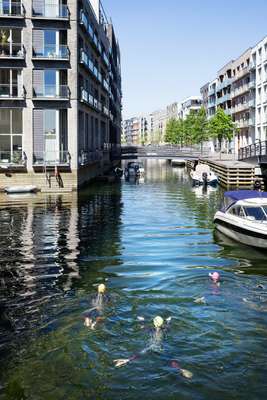
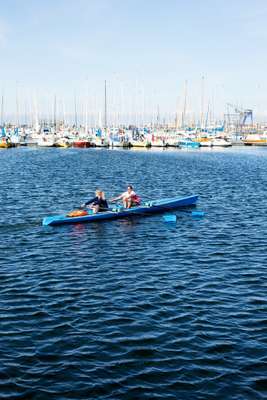
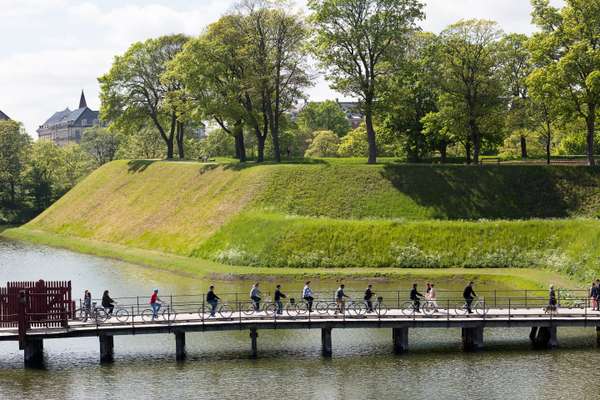
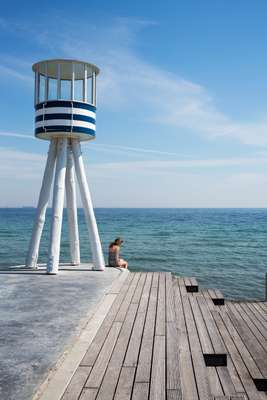

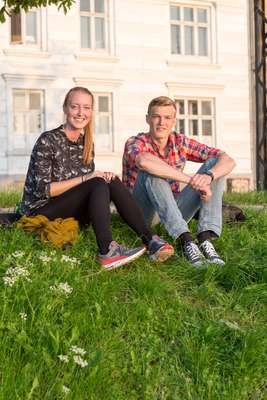

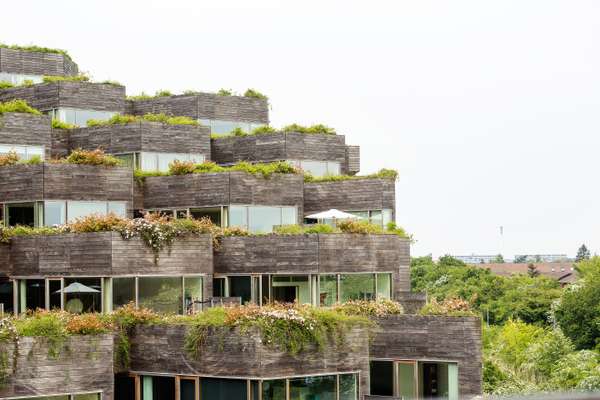
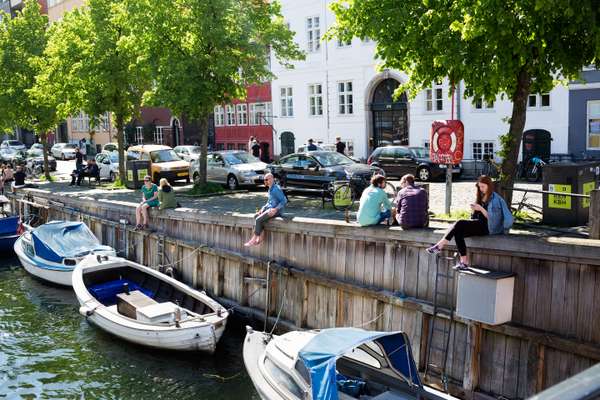
But in The Killing you see the opposite: a dark and gloomy city with the rain pouring down. You feel that a curse has landed on the city. All the people you meet are dysfunctional in one way or another. Nobody is smiling; they are all suspicious of each other and the streets are threatening.
In spite of the different interpretations there is no doubt that Birgitte Nyborg and Sarah Lund live in the same city. Copenhagen has the diversity of modern life. There is a dark side to the city as exposed in The Killing. It has its dark secrets, red-light districts, criminals and crazy people. Both series tell the true story of Copenhagen.
If you want to make good and compelling drama series you can use the city as if it has its own character – you can take the best and the worst and write it into your stories. Copenhagen has played an important part in The Killing’s universe as well as Borgen’s. The two series wouldn’t be the same without the sense of Copenhagen because it has the ability to change depending on what you need. I was born in the southern provinces of Denmark but my grandmother lived in Copenhagen, therefore I spent many holidays in the city as a child. I fell in love with it then. I always knew that I was going to move to the capital when I graduated – and I did. Living in Copenhagen is easy. It’s pretty safe, it’s simple to get around whether you walk or ride your bicycle and you have a lot of good restaurants, bars, cinemas, museums, parks, canals and beaches. It has an international – though local – feel to it; living there you consider yourself a part of the world but still very Danish.
We Danes really like to use the city – when you see the first ray of sun in March or April, chairs and tables rush into the street and you’ll get your coffee served outside, even though it’s still below 10c. It is dark and cold all winter but as soon as the sun starts shining we live in the streets.
I like to be in the city during the summer. The crowd has left for the countryside and we are a small group of leftovers in the hot centre. We look at each other in a certain way because we have the sweltering streets in common – we are not like everybody else who is enjoying the beaches and the sea. During these weeks you make new friends, participate in outdoor concerts, have picnics, jump into the fountains and go barefoot in the parks as if you were a part of a secret tale being told here and now. Two tales of the city twice over: two television dramas and two versions of everyday life.
Population: 570,200 in the city, 2 million in the metropolitan area.
Daily newspapers: 13.
Culture: 35 museums, 13 cinemas, at least 70 art galleries.
Rubbish recycled: 57 per cent.
Unemployment rate: 3.68 per cent (youth), 7.56 per cent (total).
Chain test: 11 McDonald’s, 11 H&M.
Tolerance: the first country in the world to legalise same-sex unions, in 1989. The government introduced same-sex marriage in 2012, allowing couples to marry on Church of Denmark premises as well as in City Halls.
Architecture: contemporary additions blend with historic buildings. Water, space, sustainability and light play into the recent architectural boom in maritime Copenhagen.
Public transport: the urban train system is arguably the best metro in the world.
When do the parks close? Normally 21.00, although some stay open 24 hours a day.
Libertarian paradise or stickler for rules? It’s a stickler.
Monocle fix: reform the immigration system, which makes it tricky for non-westerners to live in Denmark (that’s why there’s not much Chinese or other non-European food).

02
Tokyo
Tokyo continues to thrive as the exception to the rule: the megalopolis that has all the economic and cultural benefits of a big modern city without the attendant urban decay. The food, shopping and arts are as inspiring as ever and, in spite of its size, the Japanese capital manages to operate with unfailing courtesy, which continues to surprise newcomers to the city. Stringent rules keep the air clean while cars remain an option rather than a necessity.
Tokyo can be expensive but it offers good value for money, whether it be subway fares or lunches. In February the city voted in a new governor, polyglot Yoichi Masuzoe, who is promising to improve relations with Japan’s neighbours while readying the city for the 2020 Olympics and Paralympics.
03
Melbourne
Melbourne has proved that coffee and cricket aren’t the only things it does well. Public transport upgrades, low crime and the addition of a compelling new weekend paper explain why the city has retained its top three ranking. Other Australian metropoles trump Melbourne’s reputation for sun and surf but its cultural credentials are second to none.
The success of Melbourne Now, the largest exhibition in the history of the National Gallery of Victoria, cemented the city as an art capital. A slew of brands hoping to establish themselves in Australia have also conspicuously chosen Melbourne as their first port of call. Case in point: Sydney may have the Harbour Bridge but it still doesn’t have a Muji. That said, Melbourne would do well to control its urban sprawl.
04
Stockholm
Sweden’s capital has long held a top 10 position in our ranking and this year rises again. Stockholm displays a vibrant urban scene with a vital community of creatives from artists to fashion designers and filmmakers. Swedish cuisine and Stockholm’s world-class restaurants have especially impressed this year. There are also several ambitious (if controversial) building projects in the pipeline, David Chipperfield’s Nobel museum being one. The city retains its charm with large areas of open water, parks, layers of architecture from different decades and a low skyline allowing space to enjoy the summer sky.
While the Swedish welfare state model is under pressure this is still a society that offers more equal opportunities – such as free education and healthcare – than most countries can manage.
05
Helsinki
It’s not been the best year for Helsinki. With the purchase of native superpower Nokia by Microsoft and the acquisition of Artek by Swiss manufacturer Vitra, Finland’s patriotic pride has taken a dent. Worse, Starbucks opened its second outpost in the city, slap bang in the middle of the Alvar Aalto-designed Academic Bookstore, in the centre of town.
But Helsinki keeps its place in our top five because it still does so many things right, from low unemployment to an attractive waterfront. It’s a remarkably well-run city that’s clean, grand and bright (in summer). Soon it may also have a new museum and the Guggenheim Foundation-run competition for architects is open to international firms. Could it be this famously stony-faced Nordic nation is starting to smile at the world?
06
Vienna
In a year in which Vienna’s museums are commemorating the centenary of the outbreak of the First World War, the city itself is focusing on a brighter future. It continues to invest heavily in its infrastructure: its huge central train station is set to open next year. The DC Tower 1, Austria’s tallest skyscraper, was christened in late 2013, with more buildings to come. Seven new urban neighbourhoods are being planned, while space for an additional 120,000 apartments will be secured by next year to accommodate an estimated population growth of 250,000 by 2025.
Big plans but what of those living in Vienna now? They’re being treated to new pedestrian zones, 400 extra teachers in Vienna schools and even a new top-level internet domain: .wien.
07
Zürich
Sunny apéros, quay-side dinners and plunges into one of many lake and river Badis all contribute to a top 10 place for Zürich. Everything is accessible on foot or by bike – from museums and galleries to theatres and the bustling neighbourhood around the Viadukt.
Long famous for banking, low tax rates and confectionery, Zürich appeals to global ventures and its can-do spirit, coupled with great services and connectivity, attracts a vibrant start-up culture. In the years ahead, Zürich must find creative solutions to sustain this high quality of life and, despite a potential quota on foreigners, needs to keep its doors open to international talent. If it manages to maintain its understated chic, bustling businesses and effortless efficiency, it will continue to be the role model for the good life.
08
Munich
The regional capital of one of Germany’s most affluent Bundesländer – Bavaria – Munich is a green and pleasant city. It prides itself on doing things right: it has one of the lowest crime rates of any state; a number of world-class universities (one thing Germany in general struggles to achieve); and thriving industries, ranging from cars to media.
Bayern Munich won the Champions League last year, which for a city obsessed with the beautiful game is a huge source of feel-good factor. Yet Munich still hovers in eighth place – largely because it sometimes feels suspended. It’s a nice place to live and work but it hasn’t done anything to grab our attention over the past 12 months. The inherent conservatism of a large proportion of its inhabitants means change moves at a snail’s pace.
09
Kyoto
From its strong academic presence to its hi-tech industries, Kyoto continues to surprise those who expect the city to rest on its status as Japan’s ancient capital. Kyoto’s 2,000 shrines and temples along with a thriving traditional arts-and-crafts scene all help to bring in 50 million visitors every year. Kyoto is also a busy metropolis of 1.5 million working hard to balance its history with the demands of modern-day life.
The city has many faces: a dense urban centre of shops and offices, an outlying area so forested that it covers almost three quarters of the city and residential areas with enough room for rice fields and vegetables. The streets are safe, the climate seasonal. Mayor Daisaku Kadokawa is doing his best to encourage citizens to experience Kyoto on foot.
10
Fukuoka
Mayor Soichiro Takashima has high hopes for Fukuoka: he wants this city of 1.5 million to lead Japan’s economic revival. That’s farfetched but Fukuoka is the country’s best example of a small city that’s charting its own course.
More than half of the city is covered in greenery; mountains, beaches and farms are not far away. Crime is low, small businesses are thriving and commuting by bicycle has become a popular option.
It’s no surprise that Fukuoka is Japan’s fastest-growing city. The city’s recent designation as a national strategic economic zone should help its prospects too. But it has to address the problem of abandoned homes and should ask China and other countries in the region to tackle their pollution that occasionally blows over and chokes the city’s air.
11
Sydney
Sydney remains Australia’s face to the world – and a pretty one at that. Architectural breakthroughs such as the North Bondi Surf Life Saving Club and One Central Park are welcome additions. That said, visiting these structures from the suburbs without a car can be a challenge: Sydney’s public transport continues to languish. New bar curfews imposed by the state government have also been hard for locals to swallow.
Despite these setbacks there is a sense of optimism around the harbour. The council recently announced almost au$2bn (€1.4bn) in planned infrastructure spending and an ambitious vertical-garden strategy that has already yielded 96,000 sq m of greenery. The city has also emerged as the world’s most popular destination for international students.
12
Auckland
Auckland has hit a critical mass. It shows in the city’s vibrant retail scene and in its fleet of shiny new electric trains. Once-derelict industrial spaces are being newly developed across the city and a plethora of restaurants is opening up, full every night of the week. For the first time in memory, Auckland knows what it wants to be – even revelations of mayor Len Brown’s extramarital affair couldn’t derail the city’s progress.
There are clouds on the horizon though: property prices are considered some of the most overvalued in the developed world and the council and government are still at loggerheads over when construction will start on the game-changing nz$2.86bn (€1.79bn) city rail link. But it’s hard to see this harbour city slowing down any time soon.
13
Hong Kong
Regarded as the financial epicentre of the region, Hong Kong is making a name for itself culturally while cleaning up its act. As the world’s third-largest art market, business is booming thanks to an influx of international galleries that are setting up regional outposts in the city, while Hong Kong will also welcome its first contemporary art museum, M+, in 2017. A renewed commitment to achieve landmark environmental goals, including a 20 per cent reduction in sulphur emissions before 2020, will create a more comfortable experience outdoors.
While Hong Kong’s ease of doing business and expansive transport infrastructure is admirable, the city could do more to tackle longstanding issues such as housing affordability and quality of public education.
14
Berlin
Berlin’s new airport still hasn’t opened but a few key developments are showing that some things can move forward: the new Bikini Berlin hotel-cinema-concept mall complex opened to great fanfare in April 2014 (see issue 74). Back east, construction of the City Castle on the grounds of the former Palast der Republik parliament building is well underway. Plans to build an ensemble of skyscrapers around Alexanderplatz have been unveiled, along with city approval for a new contemporary art museum.
Berlin may at last be entering a more mature, post poor-but-sexy era but municipal politicians and investors need to remember Berlin’s history of selling itself short and act with long-term goals in mind – at the very least so no more airport fiascos take place.
15
Vancouver
Vancouver is the highest-ranking city in the Americas on our list helped by a great outdoors lifestyle, lovely climate and budding tech and media industries. Home to one of North America’s busiest ports, its shipping and transport sectors continue to grow. The city’s rapid metro system, the SkyTrain, is undergoing a ca$1.4bn (€950m) extension with a new fourth line scheduled to be in service by 2016 (though it wouldn’t hurt if they ran later at night). Add 220 parks and 11 beaches into the mix and you’ve got one pretty liveable city.
House prices, the highest in Canada, are a problem, however – one that is partly caused by the rise in foreigners buying to invest. Vancouver needs to find a solution to avoid its young being priced out of the market.
16
Singapore
Changi airport sets the tone for this hyper-efficient, wonderfully lush city-state – where else can you touch down in a botanic garden and be whisked through arrivals in 15 minutes?
There’s an ease to life here that is hard to find elsewhere. Registering a new business takes all of 15 minutes online and commuting is painless thanks to a rapidly expanding metro system. Despite Singapore’s small size and burgeoning population, the government has devoted nearly 10 per cent of its land to parks in its drive to become a “city in a garden”.
However, cracks began to appear in the city-state’s shiny veneer last year when a riot broke out among low-wage migrant workers, indicating an urgent need to address what has become one of the largest income gaps in the world.
17
Madrid
While Madrid continues to thrive under a wave of new businesses, cultural spaces and restaurants, the city could achieve even greater things if prohibitive policies were quashed. As austerity measures continue to bite, a raft of tough policies were announced clamping down on everything from noise and protests to buskers and beggars – reeking of a punitive revenue-raising drive.
Despite all this, the city still gained ground because of recently announced plans to reduce cars in the cbd and, as monocle went to print, a long-awaited public (and electric) bike scheme that was finally being rolled out. The shock cancellation of the mega-casino Eurovegas project was a blessing in disguise; Madrid should look closer to home for the solutions to its challenges.
18
Paris
With its iconic monuments and impressive museums, libraries and universities, Paris is one of the world’s intellectual epicentres. But times are tough for France: unemployment is in double digits and the sense that the country is politically rudderless is driving talented young Parisians overseas. Those that remain bemoan their city’s cost of living and clunky bureaucracy. The Paris Métro is one of the world’s busiest and most extensive subway systems but it is also one of the grubbiest and would benefit from investment.
Progress is being made. Down-at-heel corners of the city are being tidied up – the Haut-Marais has been transformed thanks to projects such as the restoration of its 19th-century Carreau du Temple covered market.
19
Amsterdam
Amsterdam is a city on the move, driving ahead with a number of transport projects that will safeguard momentum for the year ahead.
As well as building 100 new electric car-charging points over the past 12 months, the Dutch capital is investing in parking for the 58 per cent of commuters who prefer two wheels. These bike racks at the city’s train stations are a much-welcomed move. Keeping scooters off the bike paths should be next on the agenda.
Amsterdam’s cultural offerings remain strong, with the venerable Rijksmuseum welcoming some 2.2 million visitors since reopening last April. The city’s housing is a concern. Although commercial premises vacated during the financial crisis are filling up nicely in the city centre, renting a house remains expensive.
20
Hamburg
The fingers of the Elbe river and Hamburg’s shipping history run deep – along with marked socioeconomic disparity. While urban development and regeneration brought the new HafenCity quarter and ongoing revitalisation of Wilhelmsburg, questions over who these actually benefit helped spark some of the worst rioting seen in years last winter.
Paradoxically, the city is also an open place; traditional yet tolerant. Owing to the advantage of its port there is an international flounce to the city to rival Berlin. The ridiculous Elbphilharmonie, years late and millions of euros over budget, is a symbol of Hamburg’s failures. But perhaps it can triumph in formulating a progressive response to urban development issues more fundamental than the delayed frippery of a pricey concert hall.
21
Barcelona
While Barcelona has been stubborn about loosening up laws on commercial trading hours and licences, this hasn’t dented a sudden boom in a burgeoning coffee culture, which has been a welcome addition to the city.
Two recently unveiled projects have boosted the fortunes of surrounding districts. The impressive Born Cultural Centre has been a gift to small businesses in the Born district. The conversion of the L’Hospital de Sant Pau complex into an international political and cultural precinct combines spectacular architecture with the prestige of organisations such as the UN. Plans for five casino-amusement parks have raised eyebrows, while the question remains of how to balance mass tourism with the quality of life of residents.
22
Lisbon
As the final stage of the long riverside regeneration project comes to an end, Lisbon is finally rediscovering the beautiful Tagus river. Despite the crisis, the city is packed with entrepreneurs running everything from retail to restaurants in a decidedly Portuguese way. The city is finally changing the archaic rent laws that led to many of the buildings in the centre being left empty for decades.
Lisbon is now greener, taking better care of its history and traditions and still a mere 20-minute car ride from world-class surf beaches. Critics say it’s the perfect city – if you’re a tourist. Unemployment is higher than average. Salaries are low. And even though rents are going down, the cost of living in the city centre is getting more expensive.
23
Portland
This ever-cosy but industrious pocket of West Coast bohemia finds itself in the midst of a full-throttle building boom, mostly manifesting as high-density mixed developments in its leafy central neighbourhoods. The transforming skyline owes much to decades of urban planning. The food scene, based on an Oregon farming bounty protected by limits on urban sprawl, produces restaurants of national prominence.
Vigorous lifestyles (one could theoretically ski and surf on the same day) and liberal outlooks (Oregon just joined the roster of states allowing same-sex marriage) lend residents a healthy and somewhat self-satisfied glow. The resulting population spike strains local nerves but testifies to this city’s many charms and foresight.
24
Oslo
Sandwiched between the forests and the fjord, Oslo is an outdoor-enthusiast’s paradise winter and summer alike. Where else can you catch a city-centre metro and be at a ski resort in 30 minutes, or jump on a public-transport boat to camp on a deserted island?
Scandinavia’s smallest capital has plenty to offer the more laidback visitor, too. The Grünerløkka old workers’ quarter running east of the picturesque Akers river is a hipsters’ playground with micro breweries, independent cafés and boutiques dotted around green spaces. Upmarket visitors can head to the new Tjuvholmen development jutting into the fjord to watch yachts moored outside Michelin-starred restaurants. Beer prices are high but crime is low – making citizens among the happiest in the world.
25
Brisbane
This year, Australia’s third-largest city steps out from behind the shadows of Melbourne and Sydney and into the international spotlight – playing host to the G20 Leaders Summit. Arriving delegates will discover a sun-drenched destination with a flourishing start-up scene. Citizens make the most of the fine subtropical climate at leafy parks, which boast 906 council-operated barbecues.
In comparison to other Australian cities, Brisbane has a low cost of living and a spacious inner city. This leads to an ease of doing business, which in turn encourages world-leading tech entrepreneurs to stick around and interesting cafés and restaurants to thrive. Brisbane’s downfall is its violent binge-drinking culture and the strict policing that comes with it.


